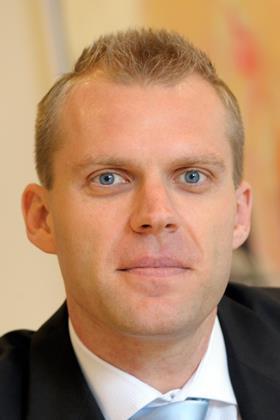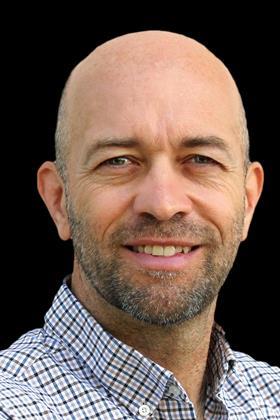Given the pressure on budgets, Content Everywhere suppliers are seeking new ways to help streaming service providers improve revenue and find new ways of making money. What new business models are providing the best return on investment, and which tools are available to support these models as well as improve efficiency and drive down costs? Below, you’ll find comments on this topic from leading Content Everywhere companies, along with tips and advice.
Johan Bolin, chief business officer, media & broadcast, at Agile Content is not alone in noticing at IBC2023 that the TV and broadcast industry is under pressure, both financially and environmentally.

“Content production costs are rising, traditional TV viewership is declining, and streaming struggles to be profitable, especially when competing against tech giants with diverse business models. Simultaneously, online entertainment alternatives are growing, particularly amongst younger generations who view TV as just one of many online content options. To add to the challenge, the industry must also become more sustainable environmentally,” Bolin remarks.
Eric Black, CTO and GM of Media at Edgio, agrees that all media companies, faced with macro-economic shifts and evolving consumer preferences, “are trying to do more with less, while finding the most profitable ways to serve their audiences through experimentation with new business models and cost points. Media companies are looking for ways to efficiently assemble and manage complex streaming ecosystems to deliver high quality video while maximising monetisation. Pulling together the various elements and technologies required to create a full chain video workflow takes time and it can be expensive — as well as a confusing process.”
Bolin offers examples of how these issues can be addressed: “By adopting the same technology utilised by gaming competitors, such as GPUs, cloud and Internet, the industry can unify production and distribution. This approach not only leads to significant cost savings but also reduces the environmental footprint. Moreover, it paves the way for new Internet-adapted TV formats and enables glass-to-glass innovations, including in-content experiences and interactivity.”
Black also says Edgio is seeing media customers pivot toward the managed services approach in order to reduce their overall operational costs and get to market faster. This, he says, allows them to “focus on content and creativity while one service partner handles all the complexities of building and maintaining a full stack streaming workflow through pre-integrated, best-in-breed partner solutions and technologies.”
“Flexibility is critical too,” he adds. “We understand that media companies want solutions that can seamlessly integrate with – and fit around – existing technology investments or preferred partner solutions. Ultimately, this approach is enabling content owners to free up precious time and resources, removing the need for multiple vendor relationships, reducing internal costs and driving profitability.”
Monetisation matters
Marty Roberts, SVP of product strategy and marketing at Brightcove, notes that monetisation “is a prevalent topic among all streamers currently: while many were originally only focused on acquiring subscribers, profit is back in fashion for media and entertainment companies. Even revenue-oriented activities are feeling the pinch, forcing video services to do more with existing resources and flat budgets. The most successful streaming companies will focus on each phase of the audience lifecycle.”

Tom Dvorak, co-founder and CCO, XroadMedia, observes that it’s a difficult time in the market for providers. “Relying on one form of revenue stream, such as subscriptions, can be risky. It’s important in our industry to adapt, as many service providers have done with their business models recently.”
He adds that accurate personalisation, “no matter what level of commitment users have, can drive even more engagement, which turns into higher revenues and reduces the likelihood of churn. We believe this is even more vital for operators offering multiple business models, as different KPIs are relevant for different business models.”
To be sure, choosing the right business models for streaming and video-on-demand is a complex strategic choice that also needs to take into account content licensing and production, as well as diverse market demands.
Ajey Anand, CEO of Norigin Media, describes how his home country, Norway, is more inclined towards subscription-based video streaming (SVOD) apps unlike neighbouring Sweden, which leans towards ad-funded (AVOD) streaming apps.

“From a technology standpoint, creating a streaming TV app that includes both SVOD and AVOD business models is both a UI/UX matter as well as an architectural plan for integrations to CRMs, analytics, and ad-servers. Serving ads within streaming TV comes with many technical challenges that become even harder with device fragmentation and the growth of connected TVs. This is resolved by having a range of client-side and server-side integrations that have evolved over time,” he says.
Anand notes that adding free ad-supported TV (FAST) channels to the mix makes sense as long as the same AVOD technologies are used, “alongside a UI/UX that supports linear TV channels too”.
According to Ryan Beebe, SVP global sales at JW Player, the focus has shifted from growth to revenue this year.
“Within the broadcast industry we have found that with 24/7 live, server-side ad insertion for live and VOD, live clipping, subscriptions and identity management, FAST and OTT, deploying large-scale managed services to simplify workflows under one roof is an efficient and cost-effective mean to increase your ROI. As companies look at tighter resources and ways to diversify revenue, they need to also be thinking about the cost to manage and deliver the content to these streaming services, devices and platforms,” he says.
Beebe adds that FAST and OTT distribution “are still in their infancy so while many are finding positive results, long-term value and growth is yet to be seen”.
Brightcove’s Roberts says that finding the “optimal acquisition channels, engagement tactics, and save actions is critical to growing a video service given a tight fiscal focus. Leveraging a more limited content library requires additional discipline for content discovery and consumption that is optimized to the employed business model; AVOD, SVOD, and hybrid. Although constrained environments are difficult to navigate, they also present a fantastic opportunity to grow market share and build a more durable business.”
Bart Lozia, CEO at Better Software Group (BSG), comments that integrating SVOD and AVOD models into one platform “is pivotal for media companies seeking to maximise revenue. This unified approach caters to a wider audience, blending premium subscription options with ad-supported content, and offers advertisers richer audience insights, boosting ad revenues. Content Everywhere vendors are crucial, providing the tech infrastructure to support these synergies.”

Lozia says that FAST channels should also be weaved into the mix. “Their inclusion diversifies content, meets varied audience preferences, and opens further advertising avenues. Ultimately, by strategically combining SVOD, AVOD, and FAST channels, and collaborating closely with tech partners, media companies can navigate budgetary challenges and offer rich, diverse content experiences.”
Lelde Ardava, sales and account manager at Veset, further observes that the growing consumer appetite for ad-supported content is “creating an opportunity for broadcasters to capture some of the lost ad revenue back when viewers shifted their attention to streaming services. FAST channels are becoming more popular, and broadcasters and content providers are using cloud playout to quickly and easily launch new services to see if they work for them.”

Ardava adds: “There is an acceptance that things can and do change fast in the broadcast industry, so broadcasters and content providers need the flexibility to move quickly and try new strategies without huge upheaval or investment. Cloud playout has an important role to play here because if a channel doesn’t pay, it’s quick and easy to close it down, and conversely, if a channel really takes off, it’s easy to extend it to new regions. We’re currently seeing a lot of innovative developments in ad-tech, so I also think it’s critically important that broadcasters and media companies leverage new ad-tech to maximise ad revenue.”
An engaging approach
Martin Sebelius, SVP and GM EMEA and LatAm at Accedo, points out that since the streaming landscape is increasingly challenging, video providers “need to be flexible and fast as they test and experiment to find their winning formula”.
“There is also a need to experiment with new monetisation routes,” he says. “This includes offering incentives and various pricing options, alongside free ad-based content, to appeal to different customer segments. Broadcasters have already started to do this.”

Sebelius says one example here is ITVX, “which offers SVOD, AVOD and a range of FAST channels, all on one platform. This can be done cost effectively if providers adopt flexible technology that can scale and efficiently meet increasing customer expectations. Customisation rather than build-your-own is the key to success.”
He adds: “Despite mainstream providers’ best efforts to be everything for everyone, there’s an exciting market for niche services. By delivering services designed to appeal to highly specific customer segments based on an affinity such as genre, region, language and identity, providers have a real chance to stand out from the crowd. Regardless of strategy, business model and optimisation works best when there’s a relentless focus on simplifying content discovery – also across content sources – and providing a user experience that matters to target users.”
Miguel Serrano, chief revenue officer at Mainstreaming, cites research conducted by carriers, analysts and video analytics companies that he says shows a strong correlation between video quality of experience (QoE) and audience engagement.
“Moreover, content owners and publishers demonstrate, based on their own data, that audience engagement is a strong proxy for viewer loyalty. In other words, the better the visual quality and the smaller the rebuffering ratio and start up time, the higher the revenue for video publishers,” he says.

According to Serrano, “the next wave for intelligent media platforms is based on a specific approach just for streaming: when all the components of such platform are designed with the only purpose of video streaming then the hardware, software, network architecture and capacity planning are optimised to improve efficiency. The outcome is an innovation in the technology and in the financials. The innovation in the technology produces measurable improvements of QoE KPIs, while the innovation in the financials make this technology much more effective than traditional models.”
Oliver Lietz, CEO and founder of nanocosmos, adds that over the last couple of years, “and in close relationship with our clients providing interactive streaming, we have noticed that additional revenue can be generated by audience engagement. The most recent significant step noticeable from our point of view is the demand for high quality interactive streaming which adds potential for growth.”

The interaction is key for audience engagement, Lietz emphasises. “Hence, we see the importance of interactive applications still growing. This applies for instance for enterprise/corporate town hall meetings with Q&A/polling/voting, but also for monetised content for live auctions, betting, gaming. Sports betting has received a big push with new trends like micro-betting.”
“Interactive applications based on live video streaming with low latency continue to grow and we see a lot of potential for the next steps towards new use cases and better quality,” Lietz says.
The role of AI
Amid the discussion about monetisation and business models, Vijay Sajja, founder and CEO at Evergent, makes a critical observation: “Churn remains one of the biggest challenges facing media organisations today. Content providers need the right mix of data-driven strategies and specialist technology to address both involuntary churn, (e.g. when a subscriber’s card payment is declined) and voluntary churn (e.g. choosing to cancel a service).”

This is where artificial intelligence (AI) can come in, Sajja says, with predictive AI-powered tools to “proactively combat churn, intelligent payment retry features to maximise revenues, or creative monetisation strategies for, say, sports streamers to maintain fan engagement during off seasons. Deflecting churn in real-time demands not only the right technology, but a certain level of creativity as well.”
Vinayak Shrivastav, CEO of Magnifi, describes AI as “a transformative tool that reshapes the broadcast industry, elevating efficiency, productivity, and creative capabilities … AI is a valuable resource enabling broadcasters to deliver high-quality, cost-effective content while opening new avenues for monetisation. AI-driven analysis of viewer data can customise experiences, recommend relevant products, and provide real-time purchase suggestions, ultimately enhancing engagement and revenue.”
Peter Docherty, founder and CTO at ThinkAnalytics, hails AI for “delivering new ways of increasing viewer engagement and monetising advertising and content. We have been at the forefront of this for over 15 years. We help operators personalise FAST channels; use generative AI for natural language interactions with viewers; and target contextual audience segments at scale.”

In summary, Rick Young, SVP and head of global products at LTN, observes that the media landscape has undergone a rapid transformation in a short period.
“Despite the macroeconomic challenges, we are in one of the most exciting periods for broadcasting, with more technology at our fingertips. But technology needs to boast the flexibility that broadcasters need in order to meet growing, transient audiences, their changing viewing habits, and maximise monetisation potential,” he says.
According to Young, media companies need to re-think their business strategies and ensure that they can reach more audiences, and audience segments, across more platforms.

“A good first step is to take better advantage of already sunk investments in primary linear channel creation and sports rights. The right technology (and service) partners can create highly automated versions of both channels and live events. Delivering platform or location specific versions is a way to capture fractured viewers and bring them back into the fold by delivering relevant content to them wherever they are consuming the content,” he says.
Importantly, “technology vendors need to work in close partnership with media companies to understand their business objectives and help them to achieve them. It’s not just about innovating – it’s about innovating with the customers’ challenges and pain points in mind to solve their problems and create real business value. This is the essence of true partnership that can help all parties grow and help the industry harness its potential,” Young concludes.
























No comments yet